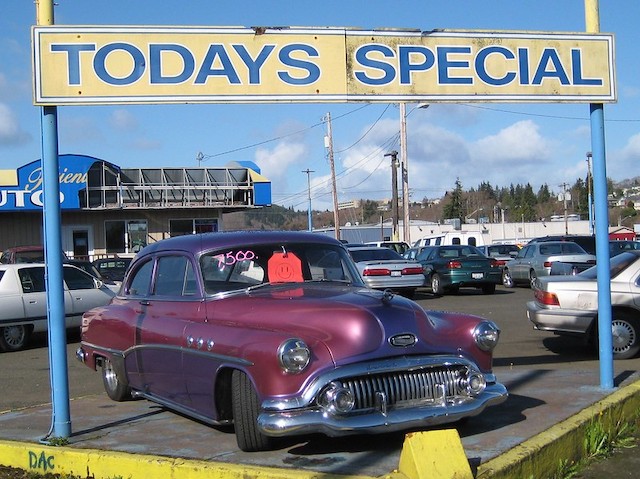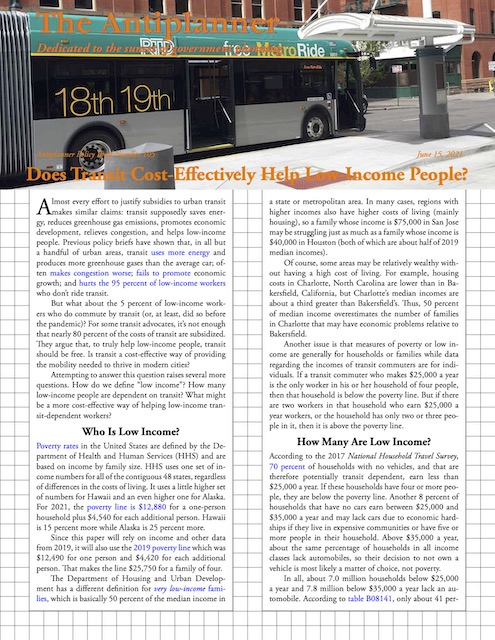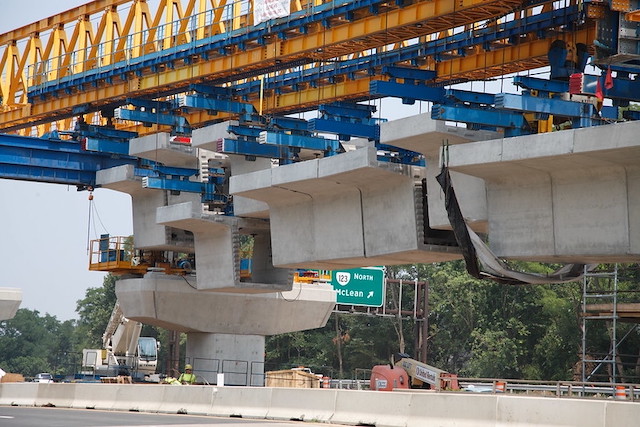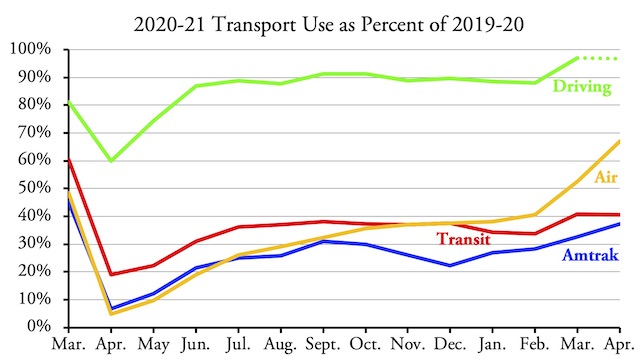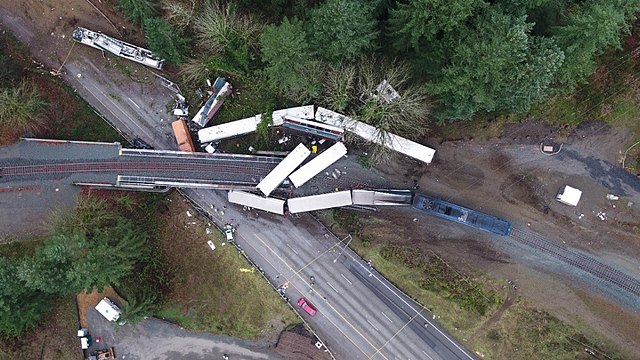A recent report published by the Transit Cooperative Research Program (TCRP) concluded that transit reduces greenhouse gas emissions. How can this be when (as the Antiplanner has shown) data published by the Departments of Transportation and Energy show that transit emits as much or more greenhouse gases per passenger mile as the average car?
Easy! The authors of the TCRP paper, using the same data I used, found that transit emitted as much or more greenhouse gases per passenger mile as the average car. They also admitted that without transit, only “33 percent of transit passenger miles would otherwise be replaced by personal vehicle miles,” which means transit is three times worse than driving.
However, they then introduce two magic numbers that, when combined with transit’s real emissions, allow them to make it appear that transit is saving huge amounts of total emissions. The first magic number is called the land use efficiency multiplier. It assumes spending money on transit would lead to land-use changes that would in turn lead people to drive less, including people who don’t ride transit. The second magic number is called the transit efficiency multiplier, and it assumes that people who ride transit, say, 100 miles a week avoid several hundred miles of weekly driving. Continue reading →

